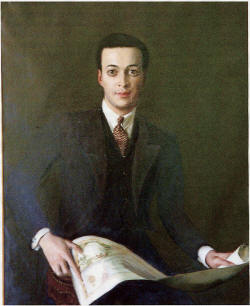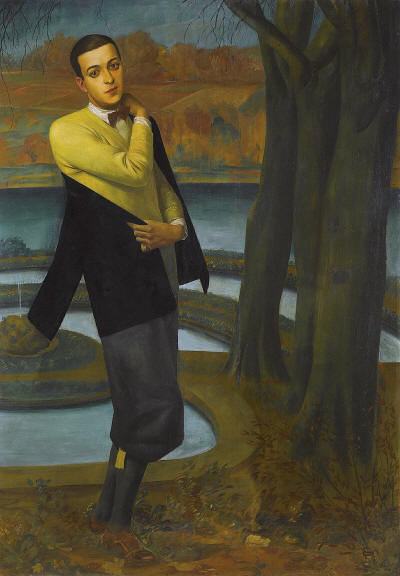 Arturo José Lopez Willshaw (Valparaso, June 20, 1900 - Neuilly-sur-Seine, March 17, 1962)
was a patron, wealthy Chilean collector, and a personality of the Parisian social life of the post-war period.
Arturo José Lopez Willshaw (Valparaso, June 20, 1900 - Neuilly-sur-Seine, March 17, 1962)
was a patron, wealthy Chilean collector, and a personality of the Parisian social life of the post-war period.
Partner Paul Rodocanachi, Alexis von Rosenberg, Baron de Redé
Queer Places:
12 Rue du Centre, 92200 Neuilly-sur-Seine, France
Villa Foscari o La Malcontenta, Mira, VE
Hôtel Lambert, 4 Rue Saint-Louis en l'Île, 75004 Paris, Francia
Château des Vives-Eaux, 77190 Dammarie-lès-Lys, France
Père-Lachaise cemetery, 16 Rue du Repos, 75020 Paris

Arturo Lopez Willshaw, nicknamed Arturito, was the son of Arturo Lopez Perez, a Chilean industrialist who made his fortune in the guanotrade, and his first wife, Sara Willshaw. He married his cousin Patricia Lopez Huici (1912 - January 14, 2010), although openly homosexual. Willshaw moved to France during the interwar period and became an important figure in Paris. At the time, he was attached to the Chilean embassy. Rich aesthete, he gathered a very beautiful collection of art objects, including a famous collection of silverware partially dispersed by Sotheby's Monaco, in 1992. He was also a patron of major donations to the palaces of Versailles and Rambouillet (including the shell cottage in the park). This millionaire divided his life between the Lambert Hotel on the island of St. Louis, where his companion Alexis de Redé lived, the Rodocanachi Hotel in Neuilly-sur-Seine (designed by the Greek heir Paul Rodocanachi from 1899) where he settled in 1928 and gave lavish parties, and his yacht La Gaviota, the latter two being designed by the interior designer Georges Geffroy.
Hôtel Rodocanachi was a baby Versailles and the chef d’oeuvre of amateur architect, designer, and music critic Paul Rodocanachi, reputedly another of Arturo’s lovers. After purchasing the hôtel particulier in the late 1920s, the guano magnate gave the simple but stately mansion a resplendent Sun King makeover, right down to a shellwork ballroom on the ground floor. Cyril Connolly, in the indispensable Les Pavillons: French Pavilions of the Eighteenth Century (1962), called it “the most dazzling recreation of the age of Versailles that I know.” Which surely pleased its chatelain, who once, when visiting that particular royal palace, was heard to murmur, “This reminds me a little bit of my house.” The mansion was bought in 1971 by the municipality, which created a museum and a library, while the property's park was well-stocked. He also lived in the castle of Vosves in Seine-et-Marne. Roger Peyrefitte said of him: "this little Chilean, a tad pretentious, was the king of guano, thanks to the islands he owned on the coasts of Chile. He loved the glitz. He owned a beautiful mansion in Neuilly. If he threw money out the windows, he chose his windows: he helped a lot in the restoration of the Palace of Versailles and responded to the requests of his tireless curator, Gérald van der Kemp. We all knew he was gay. It was even said that he had married out of love for his wife's brother. Van der Kemp wanted to show his gratitude to the patron by having a mass in his memory, in the Royal Chapel of Versailles, an initiative that seemed bold to some. After the Mass, someone said, "It's still funny that there was a mass for a Jew at Versailles." Then another turns around and says, "Don't insult a dead man!" "Jew" was therefore in his mind an insulting term. You can't say a more unfortunate and dumber word." He died on March 17, 1962, leaving to his companion of twenty years, Alexis Rosenberg, Baron de Rédé, part of his fortune and his collection and was buried in the Père-Lachaise cemetery.

Portrait of Arturo Lopez Willshaw,
by Alexander Iacovleff (1923)

Patricia Lopez-Willshaw
Alexandre Jacovleff portrays Arturo Lopez Willshaw in 19231. It was sold for 713,250 pounds (809,959 euros) by Sotheby's, London, on November 24, 2008.
My published books: